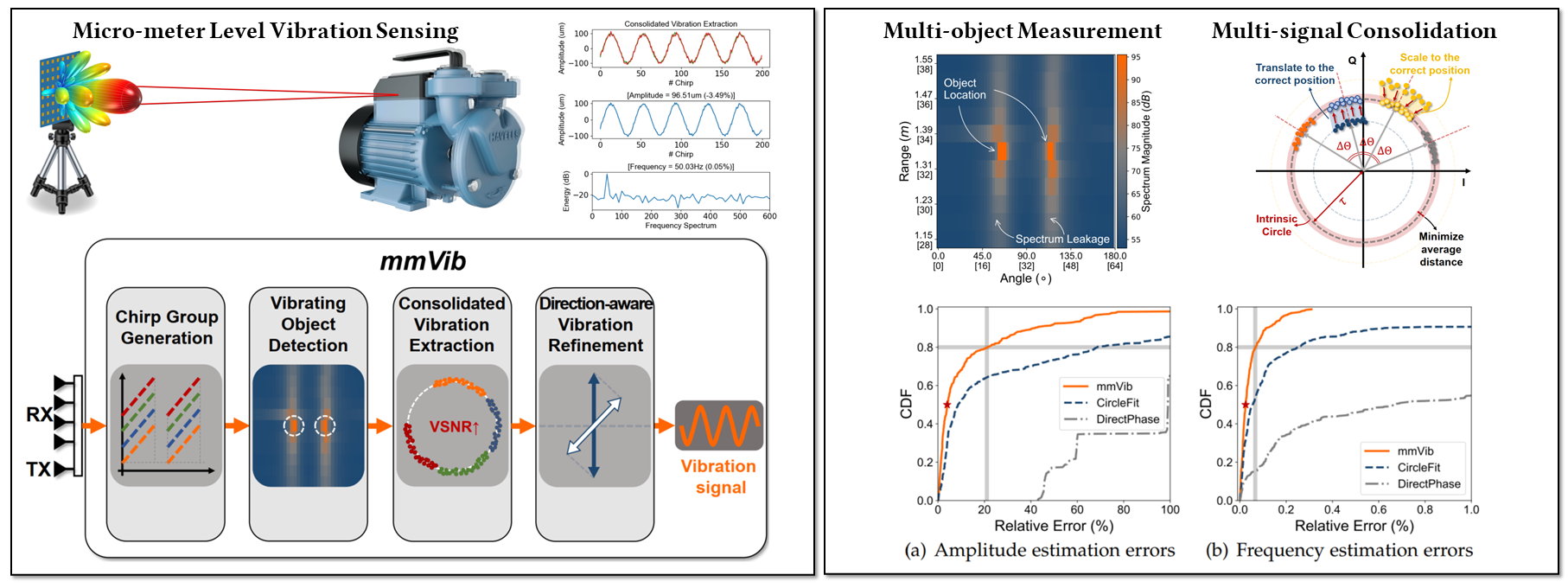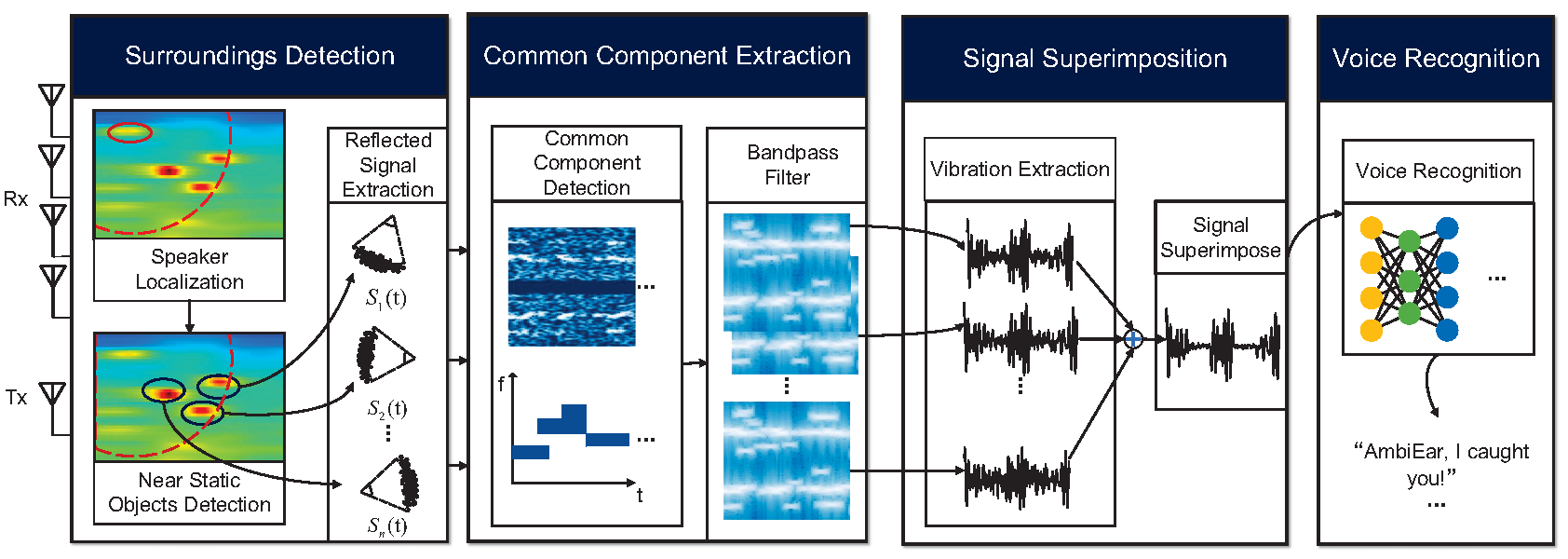Researches
mmWave Sensing
mmVib: Micrometer-Level Vibration Measurement with mmWave Radar

Vibration measurement is a crucial task in industrial systems, where vibration characteristics reflect the health and indicate anomalies of the objects. Previous approaches either work in an intrusive manner or fail to capture the micrometer-level vibrations. In this work, we propose mmVib, a practical approach to measure micrometer-level vibrations with mmWave radar. By introducing a Multi-Signal Consolidation (MSC) model to describe the properties of the reflected signals, we exploit the inherent consistency among those signals to accurately recover the vibration characteristics. This work appears in ACM MobiCom 2020.
Resources
- Paper: mmVib: Micrometer-Level Vibration Measurement with mmWave Radar
- Video: https://www.youtube.com/watch?v=1Vq2bCAoF5k
- Core code: chirp_group_range_fft.py
- Dataset: data.zip (For the full dataset please contact juncguo@gmail.com)
Dancing Waltz with Ghosts: Measuring Sub-mm-Level 2D Rotor Orbit with a Single mmWave Radar

The mmWave-based wireless sensing technology has the characteristics of high-sensitivity perception of micro-motion signals, but existing works only regard it as a 1D micro-motion measurement sensor. Therefore, we propose GWaltz in this work: it explores the multipath propagation mechanism of mmWave signals to expand the micro-motion perception dimension from 1D to 2D. GWaltz can be applied in critical industrial sensing applications, e.g., 2D rotor orbit measurement, or extended to scenarios such as high-dimensional vital signal monitoring, multi-target location/tracking, etc. This work appears in IEEE/ACM IPSN 2021.
Resources
- Paper: Dancing Waltz with Ghosts: Measuring Sub-mm-Level 2D Rotor Orbit with a Single mmWave Radar
- Core Code: code.zip
- Dataset: data.zip (For the full dataset please contact juncguo@gmail.com)
AmbiEar: mmWave Based Voice Recognition in NLoS Scenarios

Millimeter wave (mmWave) based sensing is a significant technique that enables innovative smart applications, e.g., voice recognition. The existing works in this area require direct sensing of the human's near-throat region and consequently have limited applicability in non-line-of-sight (NLoS) scenarios. This paper proposes AmbiEar, the first mmWave based voice recognition approach applicable in NLoS scenarios. AmbiEar is based on the insight that the human's voice causes correlated vibrations of the surrounding objects, regardless of the human's position and posture. Therefore, AmbiEar regards the surrounding objects as ears that can perceive sound and realizes indirect sensing of the human's voice by sensing the vibration of the surrounding objects. By incorporating the designs like common component extraction, signal superimposition, and encoder-decoder network, AmbiEar tackles the challenges induced by low-SNR and distorted signals. We implement AmbiEar on a commercial mmWave radar and evaluate its performance under different settings. The experimental results show that AmbiEar has a word recognition accuracy of 87.21% in NLoS scenarios and reduces the recognition error by 35.1%, compared to the direct sensing approach. This work appears in ACM Ubicomp 2022.